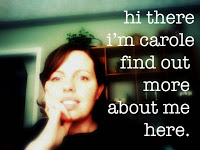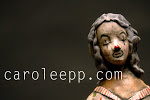Gerit Grimm Bio
Gerit Grimm was born, and grew up in Halle, German Democratic
Republic. In 1995, she finished her apprenticeship, learning the
traditional German trade as a potter at the “Altbürgeler blau-weiss
GmbH” in Bürgel, Germany and worked as a Journeyman for Joachim Jung in
Glashagen, Germany. She earned an Art and Design Diploma in 2001
studying ceramics at Burg Giebichenstein, Halle, Germany. In 2002, she
was awarded with the German DAAD Government Grant for the University of
Michigan School of Art and Design, where she graduated with an MA in
2002. She received her MFA from the New York State College of Ceramics
at Alfred University in 2004. She has taught at CSULB, Pitzer College,
Doane College and MSU Bozeman and has worked at major residencies like
Mc Coll Center, Bemis Center, Kohler Arts & Industry Program and
Archie Bray Foundation. In 2009 NET Television created “Fantasia in
Clay” a Nebraska Story about artist Gerit Grimm. Grimm now lives and
works in Los Angeles, California. www.geritgrimm.com
More Info
The central idea for my newest artwork is to transgress the
boundaries of folk art and fine art by means of the following method:
appropriate historically significant folk art and theatrical
genres—such as the characters from the commedia dell’arte; and
interpret them through visual idioms of contemporary sculpture. My work
appropriates historical narrative subjects deriving from fables, myths
and interprets them in forms that have visual and conceptual affinities
with contemporary fine art—affinities that allow me to further explore
and question the boundaries between pop art, kitsch and high art. This
new direction of my work would be a hybrid between ceramics and these
traditions within contemporary sculpture. By risking technical failure
in the process of creating the forms, I am able to attain a complexity,
dynamism, and litheness of form. The technical risks are a corollary
to another type of risk—one that reinterprets a folk figurine tradition
and pushes it to its limits. My reinterpretation of this tradition
combines both narrative and form—synthesizing pots with fairytales in a
way that tests the boundaries of each. The result is often an uncanny
union—one that evokes all manner of stories about dolls, puppets and
statues coming to life. It is a union at once wonderful, elegant and
fanciful but also at times uncomfortable and awkward.
To illustrate the manner in which I work, I will describe my recent
exhibitions in New York City and Los Angeles, in which I reinterpreted
folk traditions as well as a series of autobiographical recollections
of my childhood in the German Democratic Republic. In Gerit Grimm:
Beyond the Figurine, Contemporary Inspirations from the Museum’s
Collection at the Long Beach Museum of Art, each piece formed one part
in a whole scene—an imaginary European market square, set in the
Baroque era, as if the sculptures were magically conveyed from the Old
World into the New. This series of artworks was inspired by the history
of Baroque art and ceramics, especially Staffordshire figurines and
French ceramics from the 17th and 18th centuries. The increase in scale
highlight the sculptural forms of my ceramic figures. To date, I have
been quite successful in building life-size and larger-than-life
ceramic with some exceptions. I use reduction kiln-firing techniques to
produce a highly austere (a subtle metallic sheen or bronze- looking)
surface, which leads to the stone-like appearance of my work. This
surface reinforces its sculptural qualities and conveys an appearance of
moments frozen in stone and in time.
Schedule:
10am – Introduction, Lecture & Discussion
11am – Demonstration
12pm – Lunch Break
1pm – Demonstration
4pm – Wrap up & closing remarks
List of materials and tools to bring:
- Since this is a demonstration workshop, you’ll not really need
anything. If you want to take notes, bring supplies for that. If you
want to take photos, bring supplies for that. We will have
chairs/benches and standing room, however because of the popularity of
these workshops, you might be more comfortable if you bring your own
‘camp chair’ to sit in.








